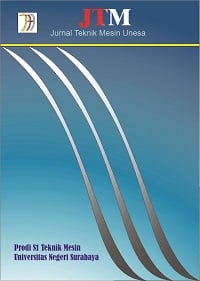UJI KARAKTERISTIK MINYAK PIROLISIS BERBAHAN BAKU LIMBAH PLASTIK POLYPROPYLENE
Downloads
Download data is not yet available.
Downloads
Published
2021-12-22
Issue
Section
Articles
 Abstract views: 796
,
Abstract views: 796
, PDF Downloads: 3292
PDF Downloads: 3292


